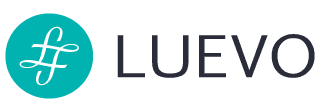Starting a fashion business will require a lot of investments. You’ll need to find a location for your store of office, you’ll need to source your fabrics, you’ll need to invest in your production, you’ll need to get your products shipped, you’ll need to get a website, etc. You’ll maybe also need to get a loan. And very early on, even before you start designing, you will need to sign contracts, so make sure you know how to negotiate them well.
Negotiation is not only a price/cost question, you’ll have to negotiate time, length of contract, service quality, exclusivity, shipping terms, interests, commissions, you name it. When trying to set up any kind of contract it is easy to fall into the trap of focusing on the price alone, trying to get the lower price possible. But in B2B negotiations, one is not a bazaar customer.
For this article, I looked back at my courses in Fashion Management and continued researching online. I concluded that the basics of negotiations are similar for both sellers and buyers.
Let’s look at the 6 steps of negotiation for sellers, and adapt them to a buyer’s perspective.
The 6 steps that lead to signing a contract are:
Identification and Formalisation of the Need
What do you really need? You need to ask yourself this question. We are not talking about what you want or what you wish for. In a business negotiation, the seller has to understand your needs. We are coming back to the essence of communications with this topic. To be prepared to negotiate, you have to know and communicate your expectations.
To communicate your needs, you will have to assess them, to evaluate them and to formulate them. You have to set up goals and make a differentiation in between what you cannot live without and what you wish for. Drawing this line will help you in focusing on the important points of your negotiation.
For example, your need may be to set up your business, to get your products in the hands of your customers.
This formalization of need implies a quantification of the need, a clear assertion of what is your budget for a particular quantity and for a certain level of service.
Then, from your own understanding of your needs, wishes and acceptance level, you can perform a market analysis.
Market Analysis
Learn as much as you can about suppliers and their products, their own competitors, the market situation (economically and geographically), etc. Be aware of your purchasing power and then you’ll be able to draw a tender.
Tender
From your analysis, ask for quotes. Quotes, quotes and quotes. Contact the companies you found during your market analysis. Communicate them your needs. Be honest, be open. Explain your situation, who you are, what you do and what you want to do. The company in front of you will be able to make you a proper offer on the ground of a good understanding of your needs.
Results Analysis
Don’t jump on the first quote you receive. Study all of them, compare them and meet the vendors. Talk with them. Assess the quotes that are meeting your request.
Short List
From your results just pick up the quotes or offers that match your needs. Now you enter the negotiation process. Don’t waste your time in negotiating with all of the companies that answered to you.
Negotiation
You can not become a negotiator overnight. Attitude and tactics will come with experience and are to be taken depending the type of service you are contracting for. You are not negotiating the same way the terms of a contract with your fabric supplier as you are negotiating your rent.
Until this point, you communicated to your potential businesses partners, who you are and how or why you would use their services for.
You want to conduct business with individuals that really understand your needs, and who are not trying to push you. Think about long term relationships, you need to get into a win-win situation. Establishing a solid, trustworthy relationship with a supplier can only help your retail business in the long-run.
Bonus Negotiation Tip: Don’t hesitate in mentioning you talked with competitors (just don’t reveal confidential information). You’ll be able to assess the other party’s real interest in working with you and the value they can bring. Remember, vendor relations should be treated as collaborations rather than conquests. Just like the buyer, the vendor must make a profit to stay in business, so if you feel he tries to conquer you, you might not be 100% in a collaboration situation. Conquest equals to short term, while collaboration equals to long-term success.
CONTRACT
Ok, you are there. In front of your contract. Just insure what’s written corresponds to your verbal agreement. Then sign, congratulations you got yourself a vendor!
With experience and time, other variables will have to be taken in account in negotiation : culture (you will maybe not be contracting in your own country), verbal and non verbal communication tricks, your negotiation style, psychology, etc. They will have to be discussed topic by topic. But first, get out there and make your own negotiation experience.
This article was written by Alexandra, fashion consultant. Follow her on Twitter @Stylindublin
Are you looking for a new writing opportunity? Perhaps you have style tips that you would like to share with the world? We value new fashion trends and are always looking for talented guest bloggers. If you’re a blogger or writer, this is the place for you to get noticed. Can you see yourself as a part of our blogging team? Apply here!
